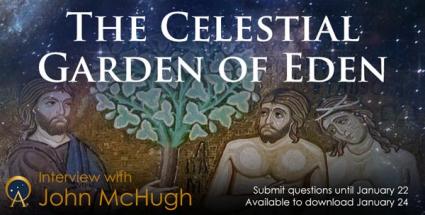
The historical existence of the Garden of Eden (Genesis 2:4-3:24) remains a mystery. The Hebrew text depicts the Judaic deity, Adam, Eve, and the villainous Serpent interacting within an intimate setting—Adam and Eve hearing God’s footsteps as he strolled through the Garden, then hiding from his sight, the Deity’s multiple conversations with the first man and woman, and the Serpent’s face-to-face dialogue with Eve. Yet the notion of imminent proximity is contradicted by geographical data in the same passage.
Eden’s sole river branches into four tributaries whose localities are verified by later Old Testament passages. The river Pishon winds through Havilah, which is Arabia; the Gihon river meanders through the land of Cush, the Hebrew word for Ethiopia; the Tigris flows east of the Assyrian religious capital at Asshur, and the renowned Euphrates courses through Babylonia. The circumstance is further confounded by the fact that the Arabian Pishon and Ethiopian Gihon rivers are never mentioned again in the Bible. And here lies the mystery: How did the characters in the Garden of Eden manage to remain visible and audible while simultaneously occupying terrain that spans 1000 miles? And how did two enigmatic rivers, the Pishon and Gihon, spontaneously materialize in Eden?
The answer has been visible in plain sight since Genesis was written. To see it we must first relinquish our modern, science-oriented mindset and embrace the cognitive worldview of the Genesis authors. The Old Testament recounts that during the Babylonian subjugation (586-538 BC) Jewish sages were conscripted into the entourage of vanquishing King Nebuchadnezzar II and his successors. There, Judaic neophytes were then indoctrinated with the most revered Mesopotamian astrological tenet—that the starry sky embodied hallowed “Heavenly Writing” that imparted unassailable truth through pictorial and literary wordplay embedded in the constellation’s images and titles.
Archaeoastronomist John McHugh translates the Hallowed Heavenly Writings of the ancient astronomers to introduce us to a Garden constellation whose titles render: “Steppe-land” (Eden in Hebrew), “Asshur,” “Cush,” and “Serpent” alongside the terms “River Pishon” and “River Gihon.” Situated beside the stellar Garden was a “Man” (Adam in Hebrew) and “Woman” constellation. Southwest of the stellar Garden hovers a constellation-god whose Sumerian sobriquet rendered “He-Will-Be,” or Yahweh in Hebrew, the personal name of the Hebraic deity. When plotted on a star map it becomes evident that all of the “Garden of Eden” legend’s actors and geographic landmarks lie in close proximity while simultaneously defining earthly localities separated by a thousand miles—a situation that perfectly mirrors their interrelationship in Genesis.
 John McHugh earned a Master’s degree from Brigham Young University (Provo, Utah, USA) with a dual emphasis on Near Eastern and Native American Archaeology (1999). He has extensive archaeological excavation and survey experience throughout Syria, Jordan, and the American Southwest. He specializes in Near Eastern and Native American archaeoastronomy as well as American Indian rock art and possesses reading knowledge of Sumerian, Akkadian, Ugaritic, Biblical Hebrew, Aramaic, Greek, and Qur’anic Arabic. John is the lead archaeologist for the Utah Cultural Astronomy Project, which is committed to exposing and celebrating the wealth of scientific wisdom embedded in the religious cosmologies of Ancestral Puebloan peoples and their modern Puebloan descendants. His current book, The Celestial Code of Scriptures (Monkfish Publishing), will appear in Autumn, 2021.
John McHugh earned a Master’s degree from Brigham Young University (Provo, Utah, USA) with a dual emphasis on Near Eastern and Native American Archaeology (1999). He has extensive archaeological excavation and survey experience throughout Syria, Jordan, and the American Southwest. He specializes in Near Eastern and Native American archaeoastronomy as well as American Indian rock art and possesses reading knowledge of Sumerian, Akkadian, Ugaritic, Biblical Hebrew, Aramaic, Greek, and Qur’anic Arabic. John is the lead archaeologist for the Utah Cultural Astronomy Project, which is committed to exposing and celebrating the wealth of scientific wisdom embedded in the religious cosmologies of Ancestral Puebloan peoples and their modern Puebloan descendants. His current book, The Celestial Code of Scriptures (Monkfish Publishing), will appear in Autumn, 2021.
